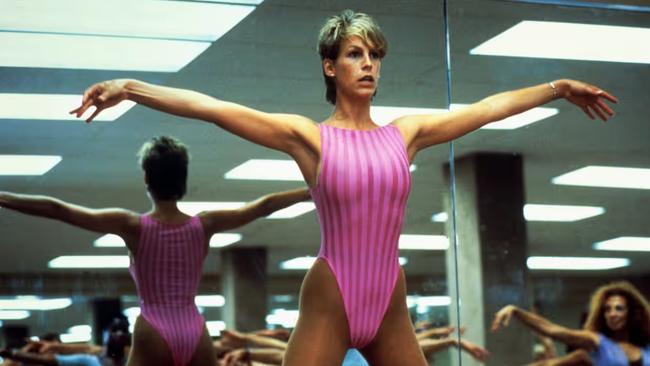Nice and easy does it — the best way to stretch
Better flexibility is one of the many benefits of a daily stretch. Here’s how to maximise your effort.

Stretching offsets some of the effects of sitting and can reduce the risk of back pain and body niggles. But the reason to do it goes beyond making oneself more supple and less prone to injury. A new paper from the University of Wisconsin La Crosse (UWLC), published in the Journal of Applied Physiology, suggests that stretching before a workout can have a powerful protective effect on arteries and veins, enabling them to function better under stress.
Any exercise is beneficial to the long-term health of the heart although moderate to high-intensity workouts can cause a temporary drop in the efficiency of blood vessel function, which can be risky for people who are susceptible to heart disease. Stretching has the opposite effect, helping to reduce the stiffness of arteries and to increase blood flow around the body.
Three years ago, a group of Italian researchers reporting in the Journal of Physiology found that performing a series of leg stretches five times a week had an anti-ageing effect on the arteries of healthy people. And in the latest study Jacob Caldwell, assistant professor of exercise and sport science at UWLC, reports that passive stretching - the kind that uses straps, bands, a rolled-up towel or even a willing partner as props to assist muscle lengthening - is beneficial to blood vessels, decreasing their stiffness and making it easier for them to dilate.
For his trial Caldwell asked two groups of healthy participants to perform four intense calf stretches or not to stretch at all before attempting a 30-minute treadmill run. As expected, both groups showed some initial decline in blood vessel function during the exercise, but those who had stretched beforehand were significantly less affected, their bodies far better able to retain good function in both large and small vessels.
In other words, Caldwell says, these passive stretches seem to make blood vessels more resilient to the stress of physical activity. “There are clear improvements in blood vessel health with stretching and this seems to be the case even in people with peripheral arterial disease who we are studying at the moment,” he says. “But benefits of stretching extend beyond blood vessels to our nervous system as well, which makes it a great addition to help patients slow disease progression.”

In case you hadn’t noticed, our bodies become less flexible as we age. Genetics and fitness levels impact our ability to bend, but so do our lifestyle habits. Too much sitting, as you might expect, does nothing to maintain suppleness. “People are typically more inflexible at a younger age these days due to lack of dynamic activity and too much screen time,” says David Behm, a research professor in the school of human kinetics at Memorial University of Newfoundland who has studied the effects of stretching for the past decade. By midlife many have forgotten what it feels like to touch their toes.
“Our muscle tissues and adjoining tendons that provide the connection to our bones do become less pliable as we age,” says Tom Brownlee, assistant professor in applied sport sciences at the University of Birmingham. “We need to work at our flexibility to maintain it and reap the benefits.” Just a few minutes a day can make a difference. “Start by stretching the body parts that give you most discomfort, such as tight hips or hamstrings from sitting,” he says. “The scientific consensus is that we start to see benefits to functional movement and posture from daily stretching within 4 weeks and after 16 weeks the gains are significant.”
Here’s how to start stretching to improve your health.
What type of stretching is best?
In addition to the passive stretching in which you use a towel or strap to achieve a good stretch, there is basic static stretching in which you hold a deep stretch position for a set time, ideally for 45 to 60 seconds - longer than that has no proven benefit.
“Static stretches are done by yourself with no aids,” Caldwell says. “Both static and passive stretches appear to produce similar benefits for arteries from a cardiovascular standpoint.” Then there is dynamic stretching, which involves controlled repetitive movements that take joints and muscles through their full range of motion, such as the leg swings, arm circles and high kicks performed by athletes and footballers in a warm-up. All of these have value and we should try to include a variety of stretches.
“Yoga has the benefit of being relaxing and promoting meditation-style benefits, while pilates helps with range of motion and strength gains,” Behm says. Try to avoid bouncy ballistic stretching, such as bending to touch the toes in quick repetition. “High-speed dynamic movements through the full range of motion can exert significant force on joints and muscles,” Behm warns.
Which stretches will help my arteries?
In Caldwell’s study participants stretched their calf muscles using a splint such as the Strassburg Sock (pounds 24.48, physioparts.co.uk) to hold the leg in position before a workout. It’s something you could do in front of the TV, he says, and there are variations that can be performed at home. “We stretched them to a moderate level of discomfort with the splint device for five minutes, which was followed by a five-minute relaxation, and repeated for four cycles,” Caldwell says. “At home you can use a towel or strap to do the same stretch and I would hypothesise that you could get away with ten minutes of calf stretching a day if you were to perform this long term.” To try the pre-workout stretch, sit on the floor with your legs outstretched in front of you and hook a towel or strap around the ball of your right foot. Holding the towel in your hands, gently pull on it so that your right foot moves slightly towards your body while keeping your knee straight. Hold for 60 seconds and repeat five times on each side.
The Italian researchers asked their participants to hold 4-5 hamstring, quadriceps, shin and calf stretches for 45 seconds on each leg, resting for 15 seconds and repeating each stretch 5 times on 5 days a week, which improved blood vessel function in the arms and legs after 12 weeks.

If you stretch one muscle group, make it the quadriceps
If you only have time to stretch one muscle group daily, make it the quadriceps, the muscle group at the front of the thigh, Caldwell says. “The larger the muscle you stretch, the greater the flow of blood, which is why the bulky quads are ideal.”
To do a classic quad stretch, stand with your feet hip-width apart and with a slight bend in your right knee. Push down into your right heel and pull up the foot of your left leg with your left hand, lifting it as far as you can towards your bottom. Hold on to a wall with your right hand if you need support. Hold the stretch for 45-60 seconds, release for 15, then repeat on the other side. Perform 2-3 times on each leg.
Should I always stretch before exercise?
While the latest evidence suggests passive stretching pre-workout is beneficial for blood vessels, the findings are mixed when it comes to improving performance or preventing sports-related injury. Prolonged static stretches held for more than 60 seconds have been shown to impair performance and reduce the power and force output of muscles if performed too soon before intense exercise, but this only really matters if you move like a sprinter or professional footballer - which most of us don’t.
Behm’s research shows that moderate static stretches held for 60 seconds or less are no better or worse than dynamic stretching when it comes to injury prevention and performance. “We do know that static stretching will decrease the incidence of muscle and tendon injuries with explosive movements like sprinting, agility, change of direction, jumping,” he says. “And while some studies have shown dynamic stretching can help to reduce injury, there is not evidence to make a definitive statement about which is best.”

A bit of both is probably ideal and it’s a good idea to try to make the stretches relevant to the movement that follows - high knees and skips are good pre-run, as are arm swings before a game of tennis. If nothing else, it makes you feel ready. A report in the journal Medicine and Science in Sports and Exercise found that neither dynamic nor static exercises had any positive effect on performance when compared with a gentle cardio warm-up or no stretching but that people did feel psychologically better prepared for a workout after stretching - which is half the battle.
Don’t bother stretching before or after a weights session
Spending ages preparing for a weights workout could be a waste of time. In a study published in the journal Sports Medicine this year Behm and his colleagues found that strength training in itself is a means to better flexibility and range of motion - the extent to which you can move parts of the body around a joint.
“Our recent meta-analysis showed that resistance training can improve range of motion in a similar way to stretching, so if you are doing any kind of resistance workout there is no need stretch after it,” Behm says. “And while you do need to warm up the body with some light cardio before resistance or lifting weights, there is no need for extensive stretching beforehand.”

And if you can’t get to the gym to do weights, stretch to boost strength
Stretching alone will get you strong as well as bendy. In a recently published paper researchers from the University of Potsdam in Germany and the University of Manouba in Tunisia concluded that stretches should be a staple of exercise prescription, not just because they improve flexibility but because of their positive impact on “muscle strength, muscle power, and muscle hypertrophy or mass”. Behm says if you don’t have time for weights, make sure the least you do is stretch at home. “Resistance training is more time-efficient at building strength in that you get bigger returns more quickly. But if you are injured or just want to sit and watch TV and grow your calves, for example, you can use prolonged static stretching using a Strassburg Sock or an exercise band.”
Try static quad stretches before downhill skiing or going for a hike
Activities that involve eccentric muscle contractions - in which a muscle lengthens as it contracts - include downhill skiing, hiking and walking downstairs. Behm says they can play havoc with quadriceps muscles in the front of the thigh, which is why your legs burn the next day, and adds that research has shown doing some static quad stretches before you leave the boot room for the slopes is helpful.
If your knees can take it, try the advanced quadriceps stretch. From a kneeling lunge position, with your right foot in front of your body (knee bent, foot flat on the floor) and your left knee behind your body on the floor, reach back and grab your left ankle with your left hand. Pull the left foot towards your bottom until you feel a stretch in the muscles at the front of your thigh. Hold for 45-60 seconds, rest for 15 seconds and repeat 2-3 times on each side.
The Times





To join the conversation, please log in. Don't have an account? Register
Join the conversation, you are commenting as Logout